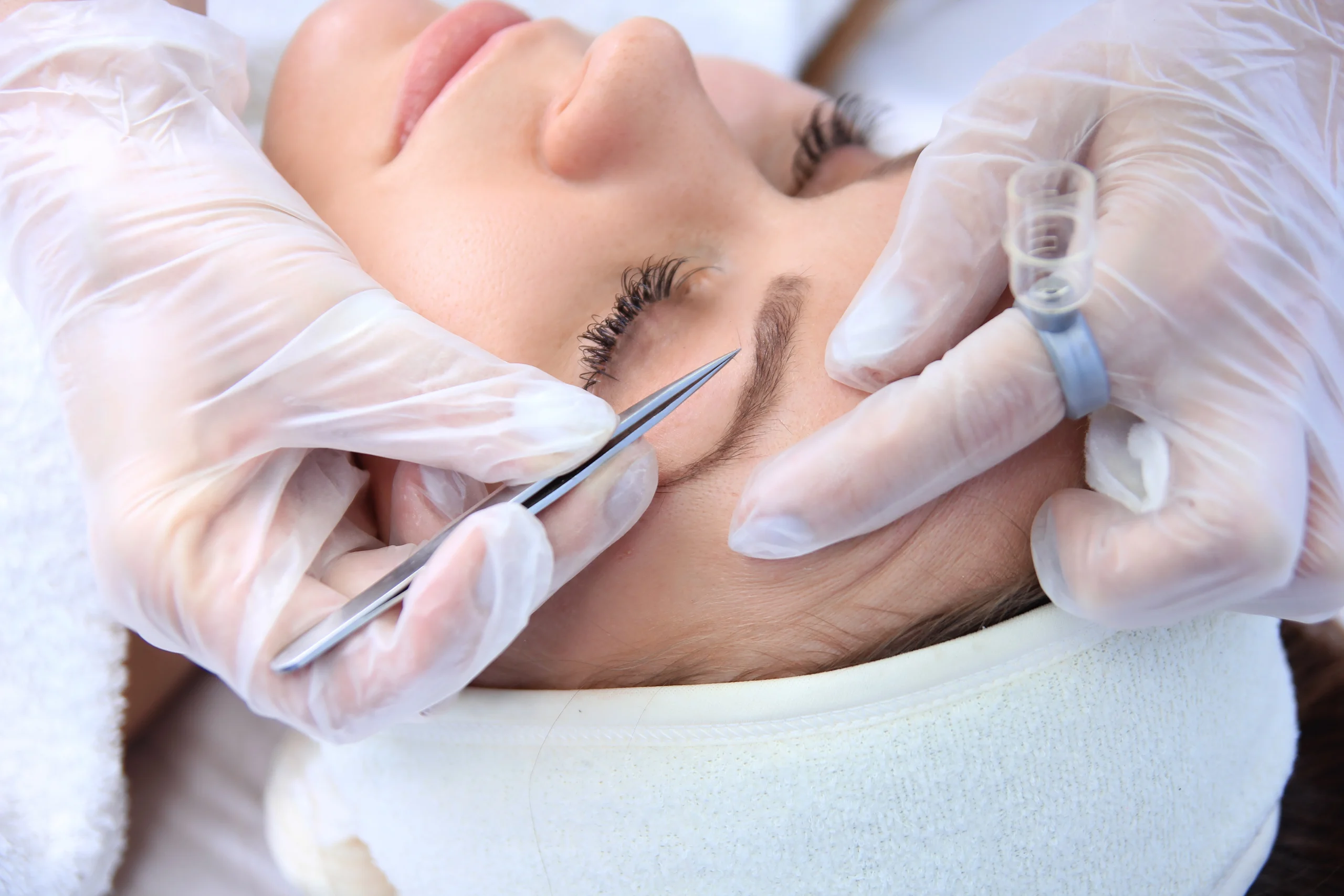
Eyebrow transplantation is a specialized cosmetic procedure designed to restore or enhance eyebrow density and shape by transplanting hair follicles from another area of the body, typically the back of the scalp. It is performed using techniques such as FUE (Follicular Unit Extraction) or DHI (Direct Hair Implantation) to ensure natural growth direction, softness, and symmetry.
This procedure is ideal for individuals with sparse, over-plucked, scarred, or genetically thin eyebrows, and provides long-term, natural-looking results.
The first step involves carefully designing the eyebrow shape and density according to the patient’s facial features and preferences.
Hair follicles are harvested individually from the donor area (usually behind the ears or from the lower scalp), where the hair is soft and similar in texture to eyebrow hair.
Using fine tools such as micro-forceps or implanter pens, each follicle is implanted into the eyebrow region at the correct angle and direction to match the natural eyebrow pattern.
The procedure is minimally invasive, performed under local anesthesia, and typically takes between 2 to 4 hours.
Eyebrow transplantation is suitable for individuals who:
Both men and women of various ages and hair types can benefit from this procedure.
Patients can return to daily life the day after surgery, although mild redness, swelling, or scabbing in the treated area may last for a few days. Transplanted hairs typically shed after two to four weeks, with new growth beginning around the third month. Results are usually visible within six to nine months, and the new hairs can be trimmed and shaped like natural eyebrows.
One
Local anesthesia
Immediately
7 days
None
* For informational purposes only, be sure to consult your doctor for diagnosis and treatment.
When performed by an experienced specialist, eyebrow transplantation produces highly natural results. Each hair is implanted individually, following the natural direction, density, and curve of your original brows.
Yes. Transplanted hair follicles are taken from areas genetically resistant to hair loss and will continue to grow permanently. However, because they grow like scalp hair, occasional trimming is needed.
No. It is performed under local anesthesia. Most patients experience little to no discomfort during or after the procedure.
Makeup should be avoided for at least one week after surgery to prevent irritation or infection. Your doctor will provide detailed aftercare instructions.
Initial shedding is normal. New hairs typically start to grow around three months post-procedure, with full results seen by six to nine months.
Most patients achieve their desired results in a single session. In some cases, a second session may be recommended for additional density or refinement.
Yes. Eyebrow transplants are effective for both men and women seeking to improve brow density or correct asymmetry.
Risks are minimal when performed by a qualified surgeon. Temporary redness, swelling, or mild itching may occur. Long-term complications are rare.

Medipol University Hospital, being the justifiably proud of Medipol Education and Health Group in Turkey and in the world, resulting in this spirit, is a health complex having JCI standards accepting patients from all over the world.
TEM Avrupa otoyolu göztepe çıkışı no:1, 34214 Bağcılar/İstanbul